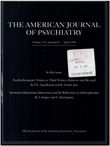A community-based public-academic liaison program
Abstract
OBJECTIVE: The authors discuss obstacles and incentives associated with successful community-based public-academic liaison activities and illustrate their conclusions by describing their public-academic liaison program, which received the American College of Psychiatrists' first annual Award for Creativity in Psychiatric Education. METHOD: The first 8 years of a state/university collaboration are described in which the parties involved first developed a variety of innovative services designed to fill specific gaps in the public service delivery system and subsequently integrated academic research and training components. RESULTS: The carefully planned and monitored process resulted in the exponential growth of interest in public sector work, the realization of the university's primary goals of developing high quality training and research sites, a substantial increase in the number of graduates accepting positions in the public sector, several projects funded by the National Institute of Mental Health, and two national awards. CONCLUSIONS: These collaborations illustrate the highly complementary relationship of public-academic liaison activities and their potential capacity to improve access to services, substantially improve the quality of these services, generate extramural support for services research, and increase the number of well-trained professionals in the public sector.
Access content
To read the fulltext, please use one of the options below to sign in or purchase access.- Personal login
- Institutional Login
- Sign in via OpenAthens
- Register for access
-
Please login/register if you wish to pair your device and check access availability.
Not a subscriber?
PsychiatryOnline subscription options offer access to the DSM-5 library, books, journals, CME, and patient resources. This all-in-one virtual library provides psychiatrists and mental health professionals with key resources for diagnosis, treatment, research, and professional development.
Need more help? PsychiatryOnline Customer Service may be reached by emailing [email protected] or by calling 800-368-5777 (in the U.S.) or 703-907-7322 (outside the U.S.).



